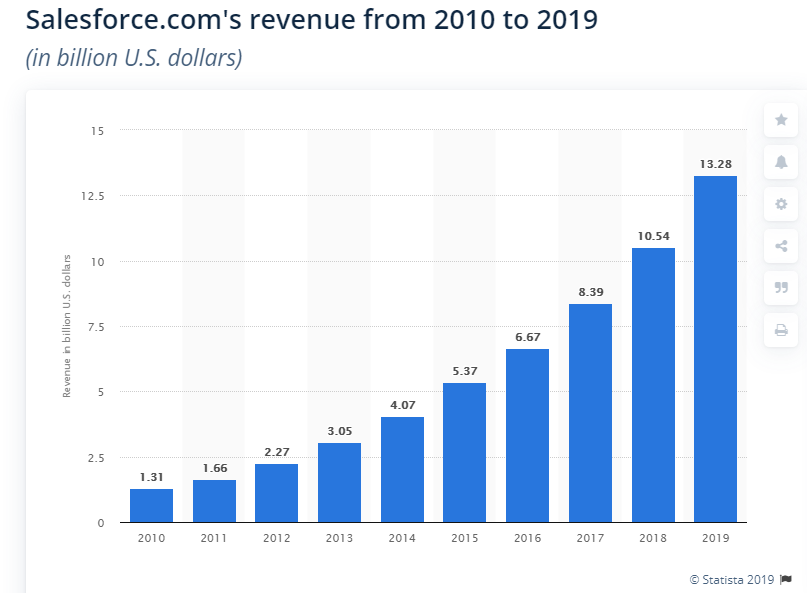7 Best Practices for Salesforce Testing
In this article, take a look at seven best practices for Salesforce testing, such as thorough unit testing, getting the right testers, and more!
Join the DZone community and get the full member experience.
Join For Free
Salesforce CRM (Customer Relationship Management) software is a foundational block of enterprise apps that corporate are deploying. Headquartered in San Francisco, America, Salesforce was founded by Marc Benioff. This cloud-based app supports enterprises to manage and recognize user’s communication or interaction through the lifecycle. This is a widely-used CRM tool and is highly configurable, extensible, and incorporated with various other apps very easily. The crucial objective of the deployment of CRM is to reinforce business relations, interactions, and client retention for ultimate business expansion and growth.
A strong CRM platform is nowadays the need of the hour. A CRM (Customer Relationship Management) tool/ platform brings a set of strategies, systems, practices, and technologies, that organizations implement to sustain customer data and customer interaction through the business lifecycle. Its crucial purpose is also to manage the relationship of an enterprise with its consumers once the product is introduced to them. Over the past two decades, along with offering CRM services, SalesForce also developed cloud-based solutions and has turned out as an eminent seller of CRM cloud services and solution.
An improved testing scenario covers all Salesforce modules from campaigns to contacts, from accounts to leads, and from prospects to reports. In short, the perfect Customer Relationship Management solutions like Salesforce allows corporations to construct in 3 ways-
1. Strong client relations
2. Boost income through Cross-selling and Upselling
3. Increase partnership/ collaboration
Statistics Overview
As per the current reports by industry experts and technical analysts, Salesforce is leading the bandwagon of preferred Customer Relationship Management software vendors.
- Salesforce dominated the global Customer Relationship Management market with a 19.5 percent market share in the year 2018, over twice over its next-door rival, SAP, at 8.3 percent share.
- Global spending on CRM software raises 15.6% to attain $48.2 billion in 2018, according to Gartner, Inc research team.
- Gartner Inc. (world’s premier research & advisory company) announced that Salesforce has positioned as a Leader in Sept’19 Magic Quadrant for CRM Lead Management.
- According to Grandview Research, the global CRM market is estimated to hit the value of USD 114.4 Billion by the year 2027 registering a Compound annual growth rate (CAGR) of 14.2 percent over the prediction period.
- According to Statista, in its 2020 fiscal year, the annual revenue of Salesforce reached 17.1 billion $, a record high. Subscription and support is the segment in business that largely contributed to the organization’s continued sales boom, passing in profits value of 16.04 billion U.S. $ in the same fiscal year.
Why Salesforce CRM Testing?
To ascertain that Customer Relationship Management (CRM) software like Salesforce met all the requirements and functionalities that were drafted by several business stakeholders’, the organization needs to expense a great time and effort to undertake testing.
Few studies and research also found that, even though all errors in the software can’t be removed, yet more than a third of these expenses could be reduced by an improved test infrastructure. This, in turn, allows more effective identification and deletion of software defects.
Software testing by leading salesforce testing providers like KiwiQA, Tricentis, 360logica, etc. overtime has come forward as a strategic function and it guarantees that the system, application, or software, being designed improves and elevates the corporate credibility to execute.
As per the recent study:
• Software defects charge almost Sixty Billion dollar yearly
• 80 percent of development costs entails detecting and correcting faults/ anomalies
In the initial phase of salesforce testing, the focus is to detect defects related to the existing data. The aim is to validate that the Salesforce CRM software application is performing as expected.
Salesforce Testing Requirements
Salesforce Testing can be categorized into two- Manual and Automated tests
- Manual tests- This type of test procedure involve testing of Salesforce app using old methods. The methods can be used to perform system, integration, functional, and, regression testing.
- Automated tests- This kind of testing procedure involves testing of Salesforce.com/Force.com apps or its features through a computer program. Test automation tools such as Selenium, QuickTest Professional (QTP), etc. are utilized for the same.
Levels of Testing in Salesforce testing covers:
1. Unit Testing
2. System Testing
3. User Acceptance Testing
4. Functional testing
5. Production Testing
6. Regression Testing
Salesforce Testing Challenges
Salesforce testing is not a simple and straightforward process. Testers can face a number of challenges during the Salesforce testing. Some of them are:
- It's not simple to test sophisticated traits like Service Cloud Console, Visualforce,
- Recreation of all the classic tests for the Lightning UI is required
- Few standard functionalities even if not in use, can't be removed
- GUI (graphical user interface) testing do not work when we move to the test environment
- Test automation should able to work in every single test environments
- Complications crop up while forming field locators for the Salesforce screens as some field IDs vary among enterprises
7 Best Practices for Salesforce Testing
- Start testing procedure early in SDLC (Software Development Life Cycle) — The QA team should be involved in the testing project from the very beginning. This will assist the tester team to anticipate the critical software requirements. One of the critical advantages of having the test team start from the beginning in the SDLC is that the risk of having a minimum time for tests is reduced. This supports testers to increase their test coverage and the variety of tests executed.
- Thorough Unit Testing—Prior to hand over the code for tests, it is one of the best practices for developers to unit test the code they have developed. This will make certain that errors will be discovered during the primary phases of the development life cycle. It may also help to lower down the testing/ retesting time and the cost for bug fixing. One more advantage to execute the unit testing is that it helps to build code that is painless to debug and reusable.
- Appropriate Test Tools — You can find various types of Salesforce testing tools to perform the thorough testing process. The test management tool for Salesforce such as Panaya ForeSight is significant for your test procedure and makes it simple to manage your critical project. While carrying out Salesforce functional testing, both Android, as well as Apple, provides simulators to test on, and Selenium is a finest tool for Salesforce automates testing.
- Agile Approach— With agile approach testers can test countless features of Salesforce and align it with the functions from the respective users. Agile methodologies propose an iterative approach to design. In Agile, the product is designed in small incremental builds. After every sprint testers work concurrently and re-evaluate the project’s direction and adapt accordingly. At the end of the sprint, the company can also add their comment so that they eventually get the product they longing for.
- Get the Right Testers— Functional tests in Salesforce software necessitates techies with real Salesforce expertise. For example, when considering Salesforce regression testing or User Acceptance Testing (UAT) testing or, you should get the tester with great experience in User Acceptance Testing and regression testing.
- Managing the tests— Distinct tests and scenarios must ensure that the built app or feature is synchronized with the current manual or systemic operations. Therefore, it is compulsory to verify the outcomes against reference data that directs the end product’s quality. The tests performed should refer to this data and outcomes should validate to the same.
- Collaborate with the right Salesforce Testing partner— The significant and logical step for long-term advantages and flawless implementation is to onboard an experienced Salesforce testing partner with great expertise. Picking out the right testing partner can assists you reap the better return from your Salesforce software and apps.
To sum up each application or feature developed within a strategic business framework and practices could bring significant value to the table. A proper testing plan should guarantee that the developed application streamlines, simplifies, and improvise the complex business and IT systems.
With these Salesforce testing guidelines and best practices, you can greatly improve User Acceptance Testing and functional testing for projects.
Opinions expressed by DZone contributors are their own.



Comments